One of the books I bought in Tetbury was Christopher Andrae’s Mary Fedden: Enigmas and Variations (Lund Humphries, pbk. 2014). A gorgeously produced book – the publisher has not stinted on the colour illustrations – the text is every bit as good. Brilliantly readable and fast moving Andrae whips on making all sorts of connections anybody interested in C20th art will enjoy.
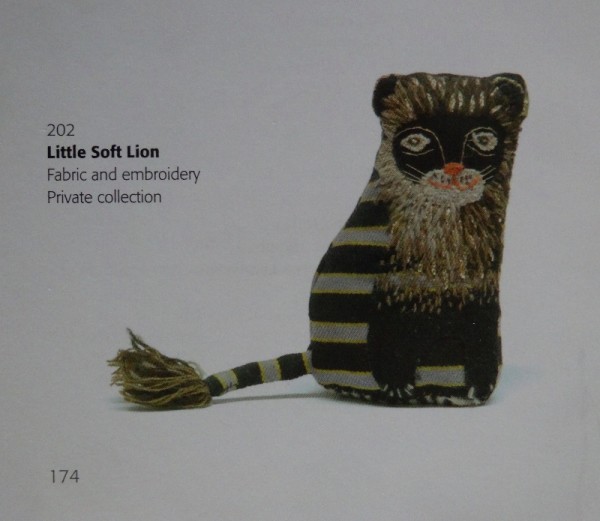
Mary Fedden: little soft lion (from Mary Fedden: Enigmas & Variations by Christopher Andreae: Lund Humphries); pbk 2014)
After reading my blog on Eric Kennington, and his Checkendon sculpture someone rang me to pass on interesting bits of information – well, rather ancient gossip, I suppose you could call it. Did I know that a member of the family who bred the sheep that we used to have grazing in the field behind us had married a Russian artist called Polunin? Polunin, a scene painter for Diaghilev and the Ballets Russes, knew Eric Kennington and upon hearing that he and his wife (met while Kennington was painting her then husband) felt the heavy breath of moral censure in Chiswick over their liaison, advised them to head for Checkendon where he assured them no one would bat an eyelid. (Chiswick more censorious than Checkendon – surely not?!) So settle in Checkendon they did – well technically Ipsden.
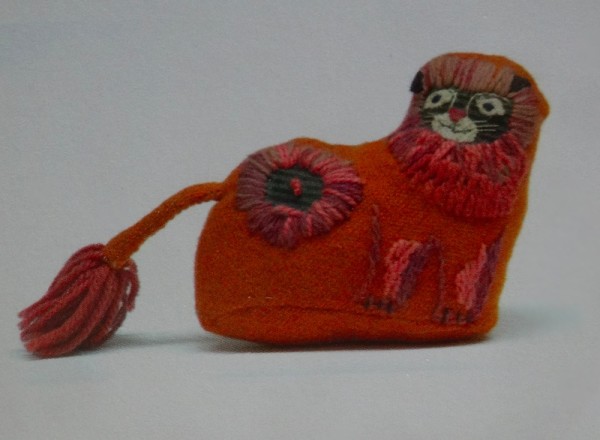
Mary Fedden: little soft lion (from Mary Fedden: Enigmas & Variations by Christopher Andreae: Lund Humphries); pbk 2014)
From Andrae I now discover that the same Polunin not only taught Mary Fedden at the Slade but was the most important influence there. “Polunin was the only person at the Slade who really interested me. He was an inspiration.” For a while she considered theatre design but realised that team work didn’t suit her. However, Polunin’s love of strong colours and use of semi geometric patterns hit an empathetic nerve and set her off developing her own distinctive and much loved style.
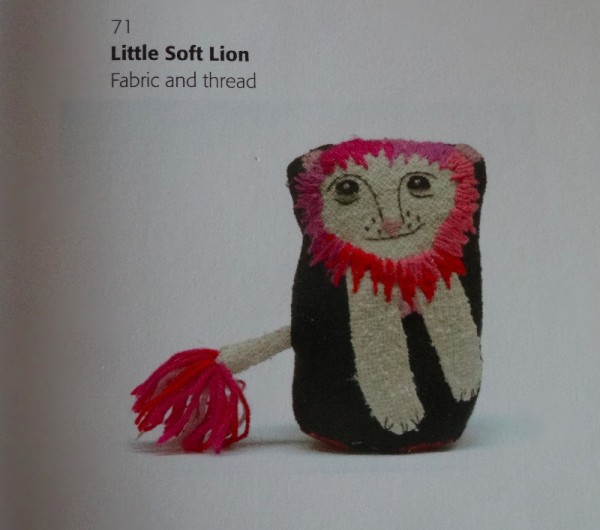
Mary Fedden: little soft lion (from Mary Fedden: Enigmas & Variations by Christopher Andreae: Lund Humphries); pbk 2014)
I lived in Chiswick for many years and often took walks past Mary Fedden’s house/studio, Durham Wharf, but there was never anything to see except for a couple of big blue doors in a brick wall. A friend was fortunate enough to visit the studio and came away having bought three paintings! Were I the jealous sort… (I’ve just done an internet search for Durham Wharf and found it had also been Kennington’s studio before Mary Fedden and her husband Julian Trevelyan bought it!! I can’t quite work out whether the property is about to be redeveloped or whether it has been already but the architects’ drawings look a bit too smart for my taste.)
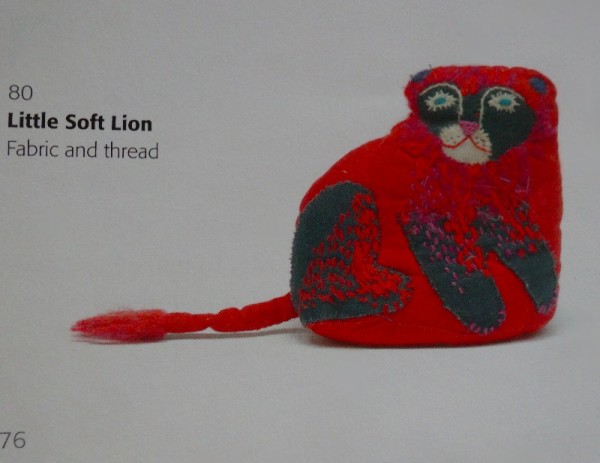
Mary Fedden: little soft lion (from Mary Fedden: Enigmas & Variations by Christopher Andreae: Lund Humphries); pbk 2014)
But I have digressed once more, for beyond wonderful as the book is what I loved almost more than anything else are Mary’s little soft lions. It is always a joy to discover an acknowledged artist picking up the needle and what a delight it was to discover that she made more than a hundred of these to give to babies. Here are the 4 pictured in the book. You do wonder how many others survive and suspect most were probably loved quite literally to bits!
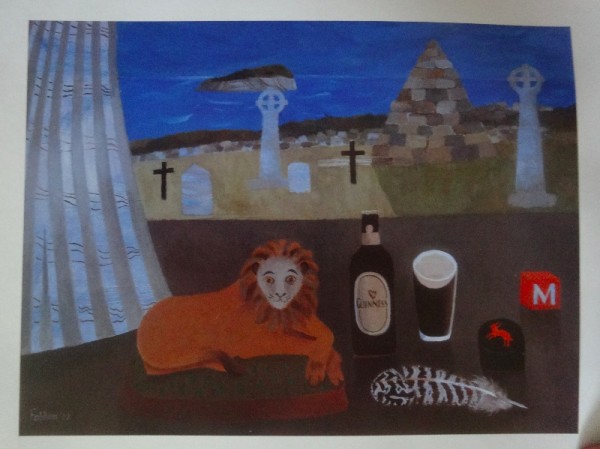
Mary Fedden : Irish Lion – in a private collection (from Mary Fedden: Enigmas & Variations by Christopher Andreae: Lund Humphries); pbk 2014)

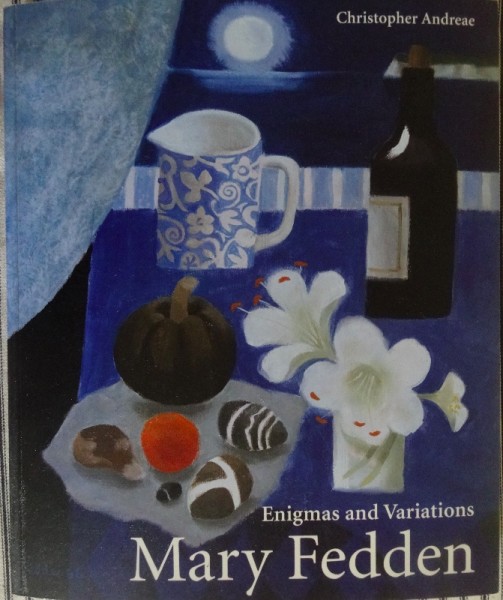
10 Comments
I remember seeing Mary Feddon interviewed on television shortly before she died and her vigour and intellegence were undiminished. There must be a link between art and a long life; so many very old actors and artists seem largely unaffected by the passage of the years. (Or is it just that we see only those who are still healthy in the public eye?) I like to think that positive creativity, with brush, clay, needle, or perhaps even wooden spoon and baking bowl, slows the rate of brain deterioration! X
It’s a fascinating thought and I’m sure there’s something in it – I’m sure the inner dialogue artists go through to produce something keeps the brain whizzing along and making lots of connections. (My father had a stroke and was left speechless and with lots of movement impaired but recovered completely. He said afterwards that the thing that kept him going was reciting to himself all the poetry and hymns he knew by heart and enjoying this inner life. He came to live with us where there were 4 lively children and I think this further helped his complete recovery.)
I can well imagine those little soft lions being loved to bits. And going on all sorts of imaginative adventures…
You can, can’t you. It makes me want to start making them for babies too.
I love Mary Fedden’s work, but had forgotten about these little lions – they are delightful.
I just caught up with recent posts and felt for you about leaving your garden and specifically your Honorine Jobert. I had to deal with an overgrown bed of Japanese anemones a few years ago and was left with quite a few broken-off roots. I plunged them into a spare trough, topped it up with compost and forgot about them, hoping I could eventually transplant them back into the newly-cleared plot. But they were such a delight as a container flower that they stayed where they were, and eventually made the move with us from Cornwall to the Peak District. Maybe you could dig around the edge of your clump and take a few root cuttings with you to your next home – I left so many beloved plants behind, but I’m so glad I brought the anemone with us. Best of luck with your search for a new home.
Thanks for this idea Marge – I had thought of transferring some hostas but hadn’t given a thought to the Japanese anemones.I will do it.
I have never heard of Mary Fedden but what an interesting story you tell… love the little soft lions too. Six degrees of separation is always such a wise saying.
I hope too that all is looking positive for your move such a lot to think about for you… a great idea to pot up some dearly loved plants. Plants are very forgiving about being moved and may even grow better wherever you decide to put your trowel!
I bet you see Mary Fedden prints everywhere now you’ve been introduced to them!
Things are looking more positive on the moving front – fingers crossed – and if I have time I will do bit of transplanting of favourite plants.
Julian Trevelyan lived at Durham Wharf for many years with his first wife Ursula. So it is not right that he and Mary bought it. I don’t know if Polunin lived there at any stage, but I doubt it.
Many thanks for this, Mark.
One Trackback
[…] Mary Fedden knew had babies, she made them little soft lions as a present. I mentioned them here when I was saying how much I enjoyed reading Christopher Andrae’s Mary Fedden: Enigmas and […]